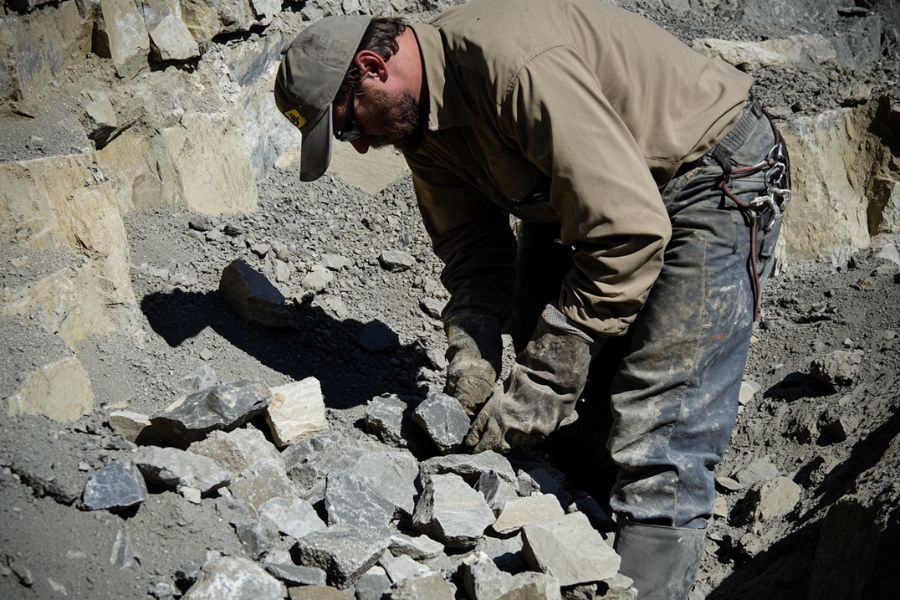From the Delaware River in the east to the Ohio border in the west, and from New York’s southern edge to Maryland’s Mason-Dixon Line, Pennsylvania is a treasure trove for gem enthusiasts.
But finding tourmaline can be frustrating and time-consuming. Many rockhounds spend countless hours searching without success. Don’t worry!
We’ve done the hard work for you. We’ll show you the 40 best spots to find tourmaline in the Keystone State.
These carefully researched locations will save you time and increase your chances of a successful hunt. Get ready to discover Pennsylvania’s hidden gem hotspots!
How Tourmaline Forms Here
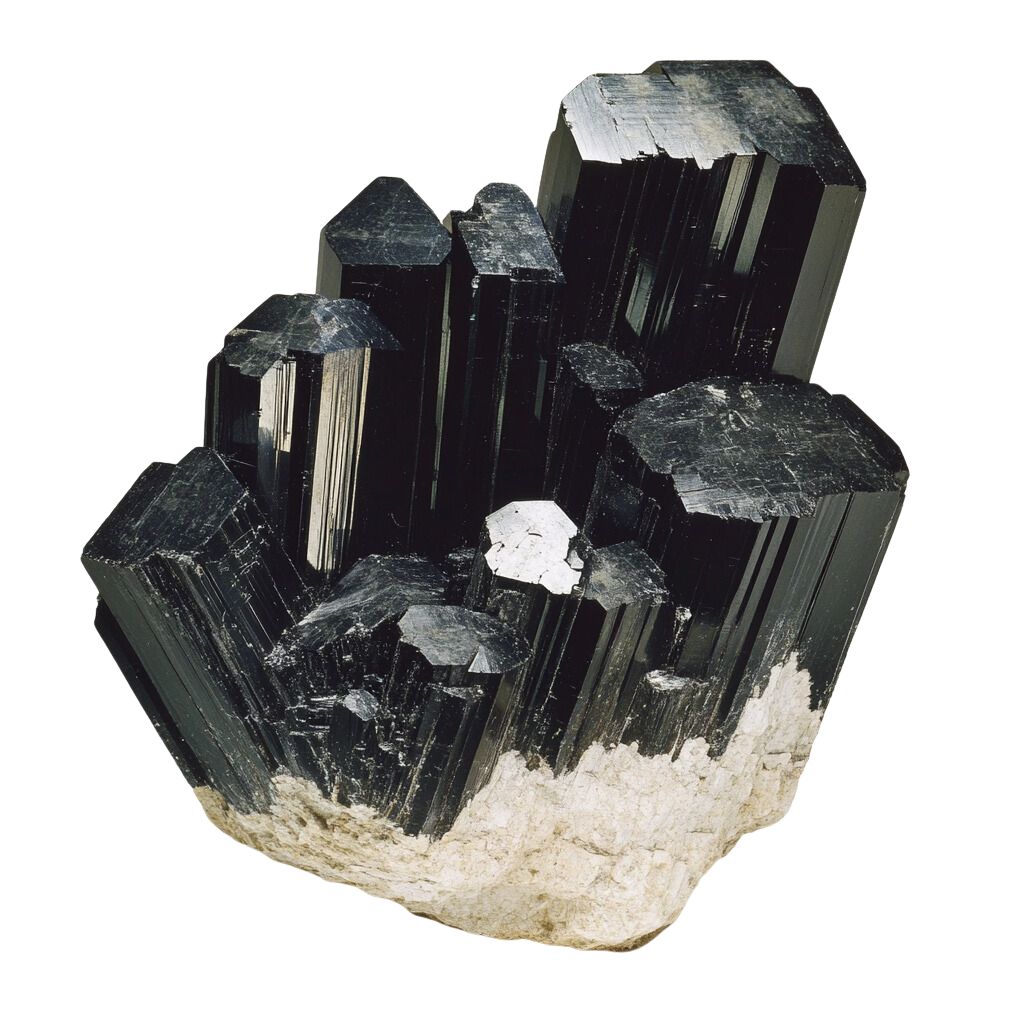
Tourmaline forms deep underground through intense heat and pressure. It originates from hot, mineral-rich fluids that move through fractures in rocks like granite and pegmatite. As these fluids cool, the minerals within them start to crystallize, forming tourmaline.
The color of tourmaline depends on the specific minerals involved, leading to a wide range of hues including pink, red, green, and blue.
Over millions of years, these crystals grow and become the beautiful, multifaceted stones we see today. Tourmaline is prized for its variety of colors and is often used in jewelry and decorative items.
The Types Of Tourmaline
Several incredible types of Tourmaline can be found in the US as well as in our state. Each is uniquely beautiful and interesting including:
Elbaite
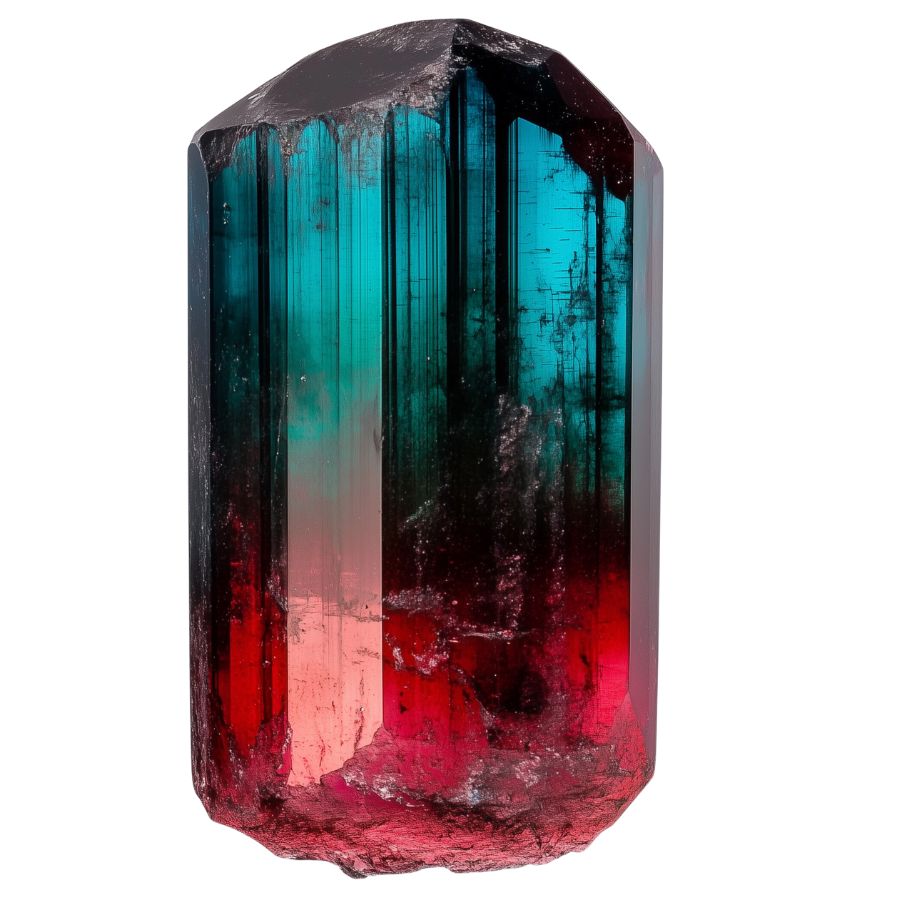
Elbaite is found in pink, red, green, blue, yellow, and even colorless forms. What makes elbaite special is its ability to show multiple colors in a single crystal, like the famous “watermelon” tourmaline with pink and green hues.
This gem stands out due to its complex chemical makeup, which includes lithium, sodium, and aluminum. This composition gives Elbaite its diverse color range and dichroism, allowing it to display different colors when viewed from different angles.
Elbaite has a unique place in history as the first tourmaline variety in which lithium was discovered back in 1818. Some rare types, like the neon blue Paraiba elbaite, are highly sought after by collectors and jewelers.
Schorl
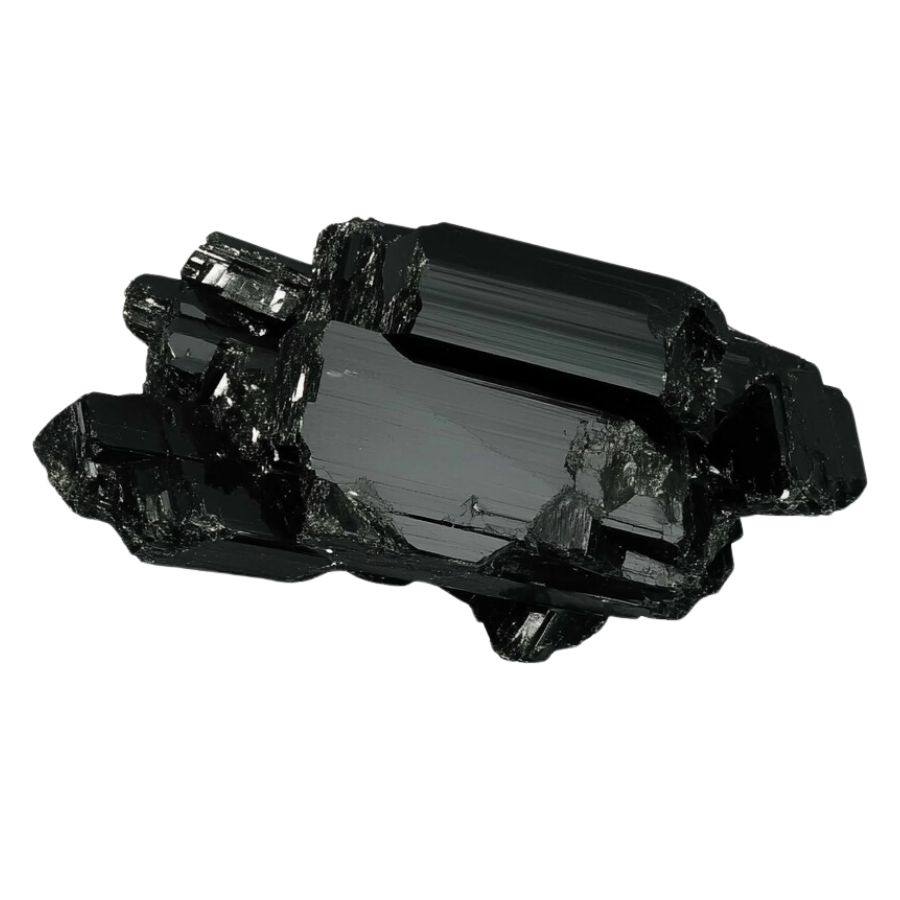
Schorl is known for its deep, rich color. It typically forms long, prismatic crystals with a shiny, glass-like surface when polished. Unlike other tourmalines, schorl gets its distinctive black color from high iron concentrations.
One of Schorl’s most fascinating features is its ability to become electrically charged through heating or rubbing. When charged, it can attract or repel small particles.
This unique electrical property makes Schorl valuable in various industries. It’s used in electronics and manufacturing to control static electricity and electromagnetic interference.
Despite being less colorful than other tourmalines, schorl’s practical applications make it an important and interesting variety.
Rubellite
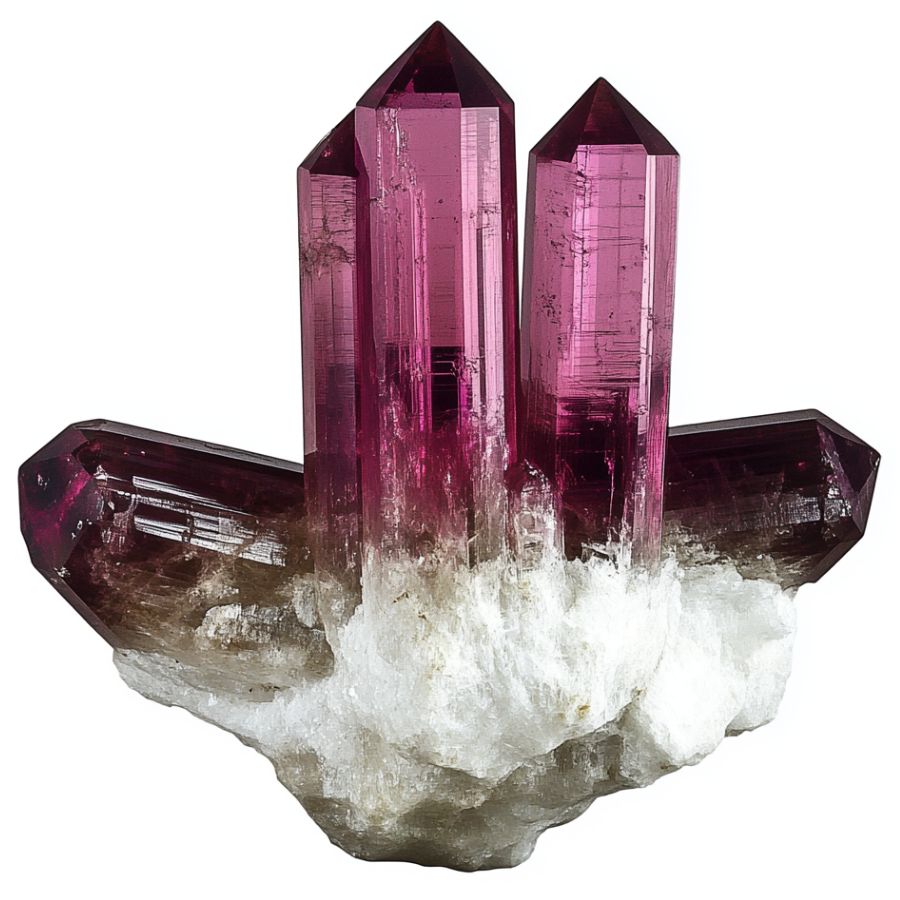
Rubellite stands out with its vibrant pink to red colors. The most prized ones show a pure, saturated red without any brown or orange hints. This beautiful color comes from manganese in its makeup.
One cool thing about rubellite is its double refraction. It can look like it has two different colors when you view it from different angles.
Dravite
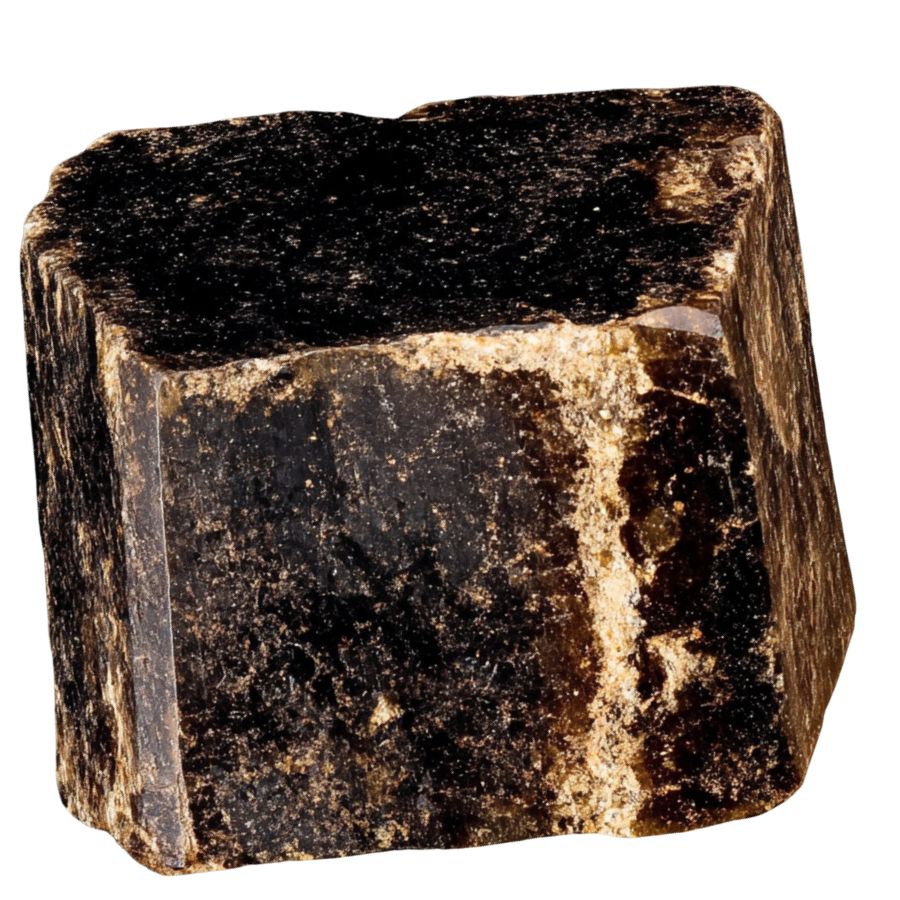
Dravite, or Brown Tourmaline, comes in shades from dark brown to light brown-yellow. It can look a bit like Smoky Quartz, with a semi-see-through quality.
Its crystals are often needle-like or prismatic, with points at both ends. This sets it apart from other tourmalines like the darker schorl or the colorful elbaite.
What makes dravite special is its rich sodium and magnesium content. This sets it apart from other tourmalines. It was first discovered in 1883 and named after the Drava River in Slovenia.
Indicolite
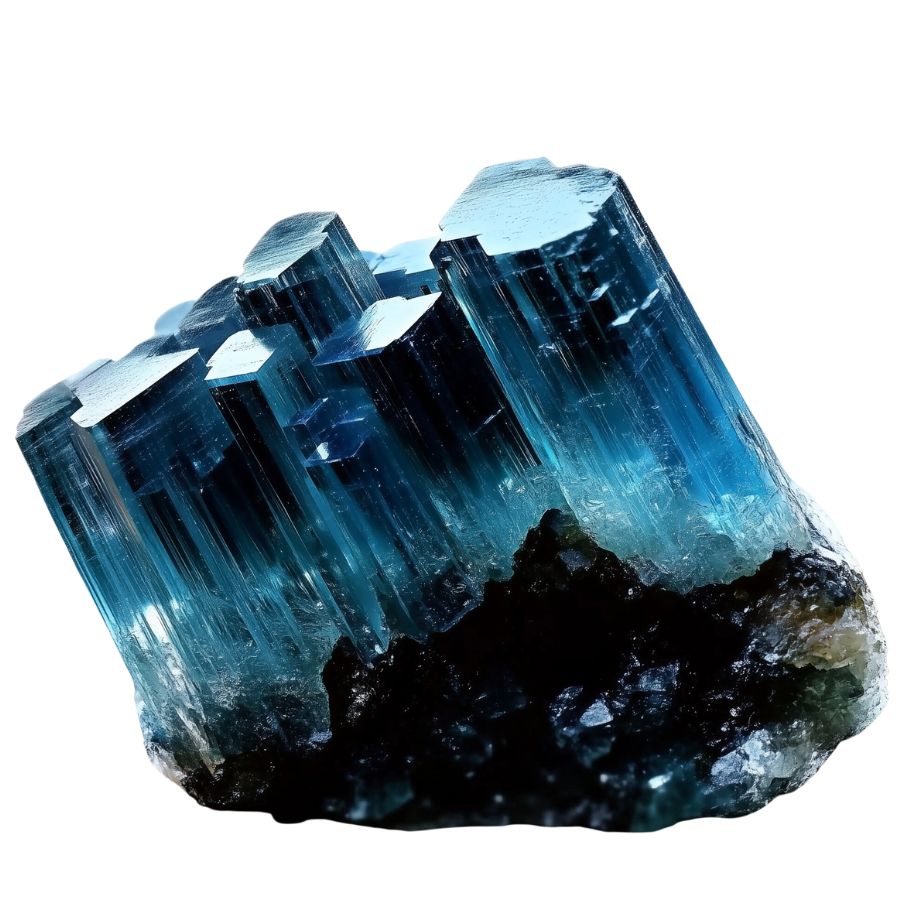
Indicolite is a rare and captivating blue to blue-green stone. It’s prized for its pure, bright blue color, which is considered the rarest within the tourmaline family. The hues can range from light blue-green to deep, rich blue, often with high clarity.
What sets Indicolite apart is its unique optical effects. It shows pleochroism, appearing to change color when viewed from different angles. Some specimens also display chatoyancy, creating a “cat’s eye” effect when cut in a certain way.
Indicolite is sometimes called “Brazilian sapphire” due to its resemblance to the precious gem. However, they’re different minerals.
The increasing demand for blue tourmalines has made indicolite highly sought-after in the gemstone market, appreciated for its beauty and rarity.
Watermelon Tourmaline
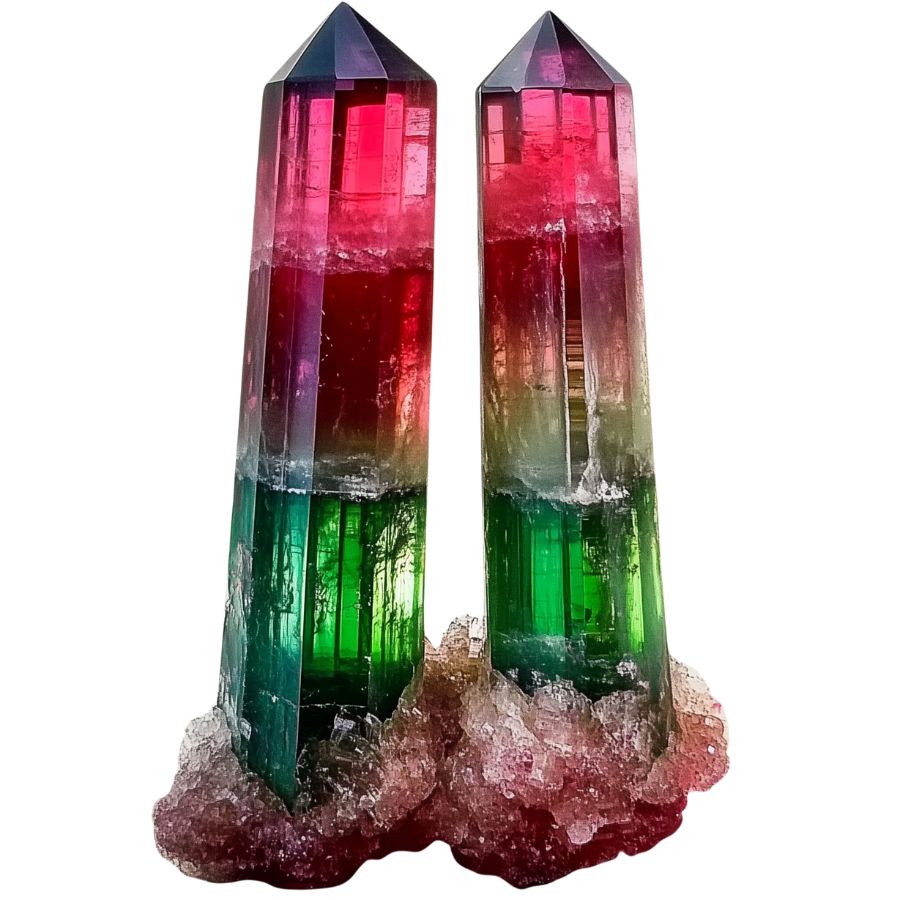
Watermelon tourmaline is truly one-of-a-kind. It looks just like a slice of watermelon, with a pink or red center and a green outer layer. This unique look happens because different elements join the crystal at different times as it grows.
These crystals often form in a rounded triangle shape. They’re see-through to somewhat clear and have a glass-like shine. When cut into slices, they really do look like little watermelons!
Cat’s Eye Tourmaline
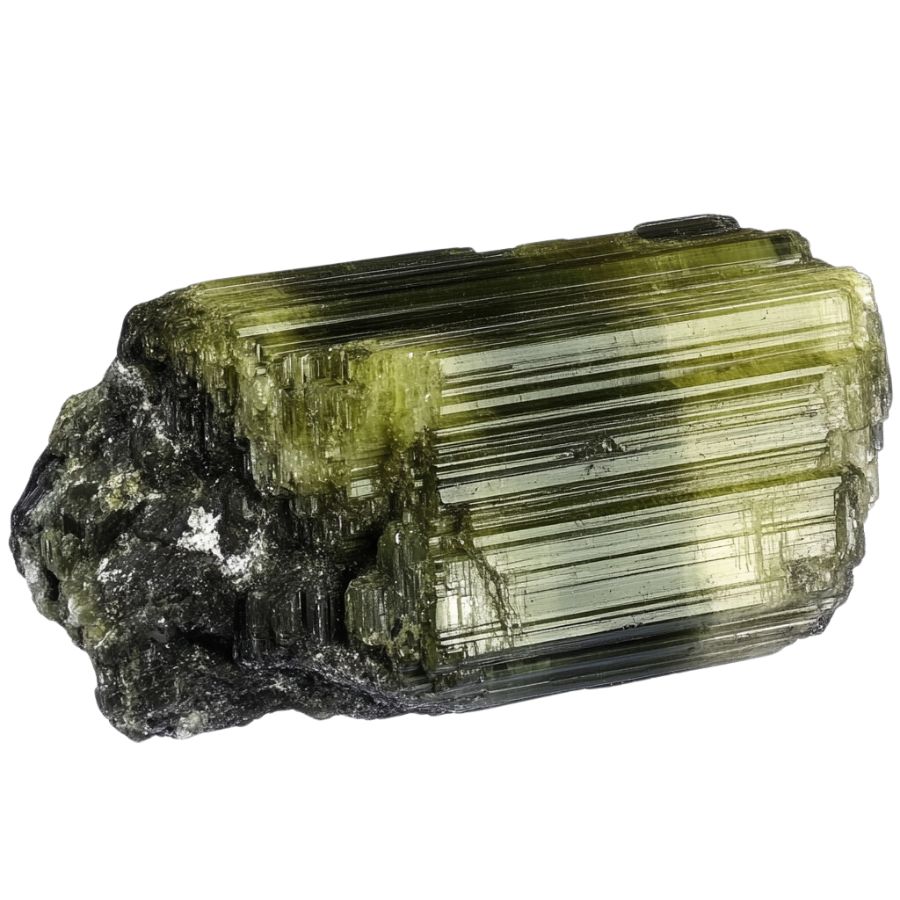
Cat’s eye tourmaline is known for its mesmerizing chatoyancy effect. This creates a bright band across the stone’s surface, resembling a cat’s eye.
This stone comes in various colors, from green to pink to brown, and is usually semi-translucent to opaque.
What makes this stone special is the perfect alignment of tiny, needle-like inclusions inside it. These scatter light in a unique way, creating that eye-catching effect. It’s quite different from other tourmalines that don’t have this feature.
Unlike other cat’s eye stones, Tourmaline offers a wider range of colors and is often more affordable.
Achroite
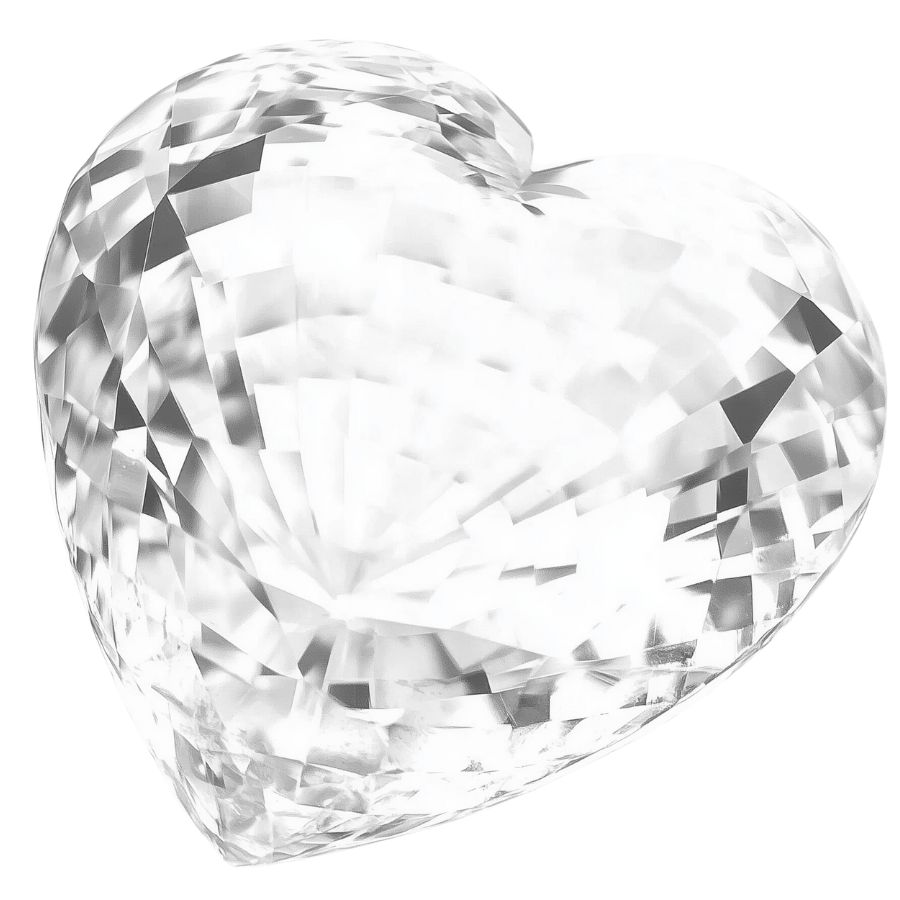
Achroite is a rare, colorless variety of tourmaline that looks like a drop of clear water turned to stone. It’s completely transparent, making it unique among tourmalines which usually have color. The name comes from Greek, meaning “without color.”
What’s special about achroite is that it doesn’t change color when viewed from different angles. It means the stone can be cut in many ways without losing its clarity.
Verdelite
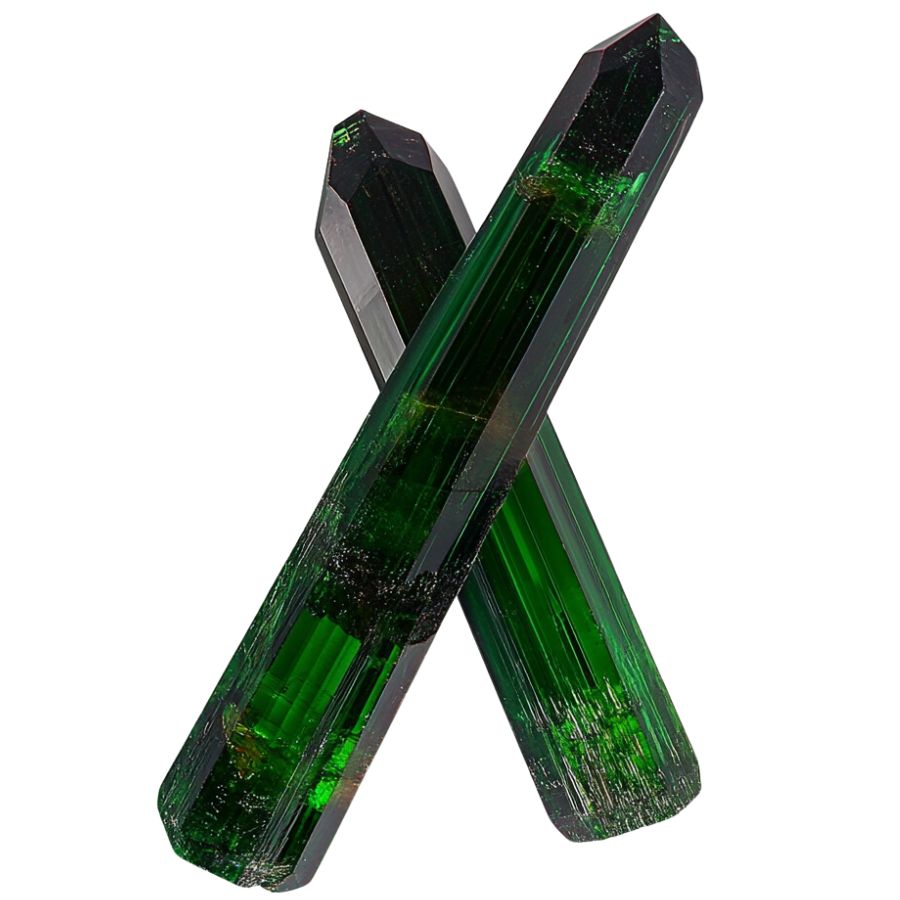
Verdelite is known for its beautiful green color. It can range from light green to deep emerald.
One thing that makes verdelite special is that you can find big, clear crystals of it. This isn’t always easy with other gemstones.
People love using verdelite in jewelry because its rich color and interesting light effects make it a popular choice for all kinds of accessories. Each piece of verdelite is like a little piece of nature you can wear.
Paraíba Tourmaline
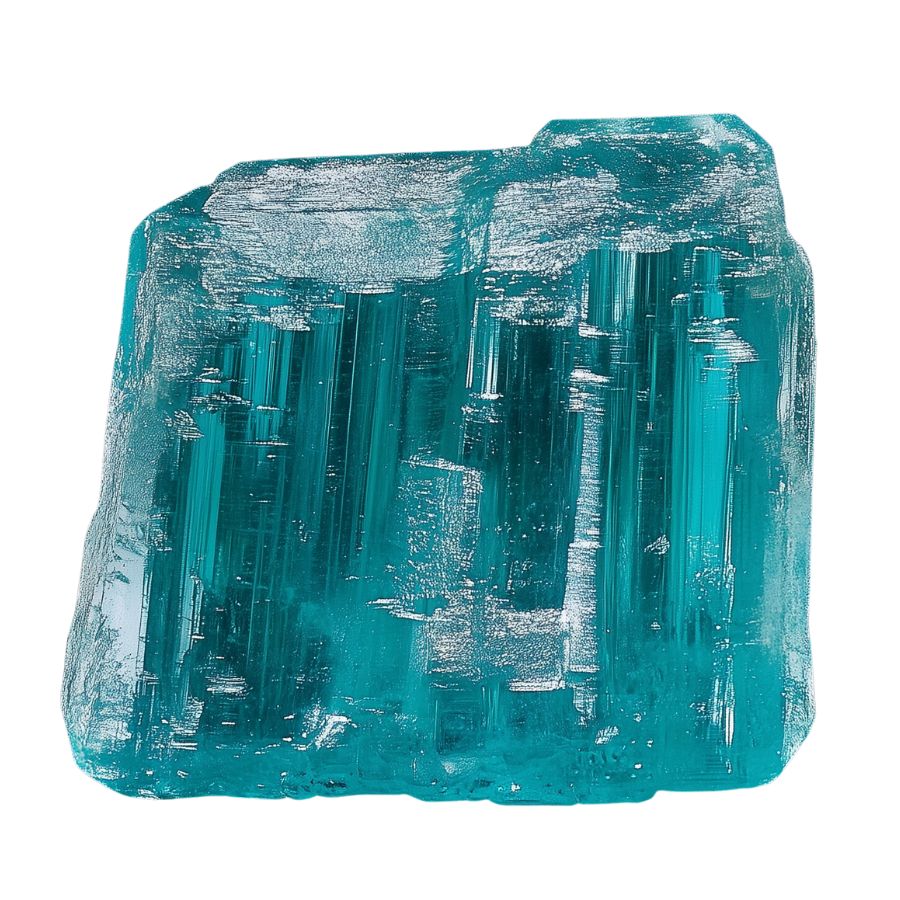
Paraíba Tourmaline is a rare gemstone that catches the eye with its vibrant neon blue or green color. It’s like no other tourmaline you’ve seen before. The intense glow comes from copper in the stone, making it stand out from its cousins.
This stone is one of the rarest. For every 10,000 diamonds mined, only one Paraíba tourmaline is found.
It was only discovered in the late 1980s, making it a newcomer in the gem world. But Paraíba tourmaline’s unique color and rarity quickly made it a favorite among gem lovers.
Its discovery caused quite a stir in the gem community. Even small stones can be valuable because of how rare and beautiful they are.
What Rough Tourmaline Looks Like
When you’re out looking for rough Tourmaline on your own it’s important to know what you’re looking for. But before we dive into specifically what to look for you need to make sure you understand the type of rocks and minerals you’re seeing.
If you want REAL results finding incredible rocks and minerals you need one of these 👇👇👇
Finding the coolest rocks in isn’t luck, it's knowing what to look for. Thousands of your fellow rock hunters are already carrying Rock Chasing field guides. Maybe it's time you joined the community.
Lightweight, mud-proof, and packed with clear photos, it’s become the go-to tool for anyone interested discovering what’s hidden under our red dirt and what they've already found.
Join them, and make your next rockhounding trip actually pay off.
What makes it different:
- 📍 Find and identify 140 incredible crystals, rocks, gemstones, minerals, and geodes across the USA
- 🚙 Field-tested across America's rivers, ranchlands, mountains, and roadcuts
- 📘 Heavy duty laminated pages resist dust, sweat, and water
- 🧠 Zero fluff — just clear visuals and straight-to-the-point info
- ⭐ Rated 4.8★ by real collectors who actually use it in the field
Here are some tips to help you recognize rough tourmaline.
Look for Color Variations
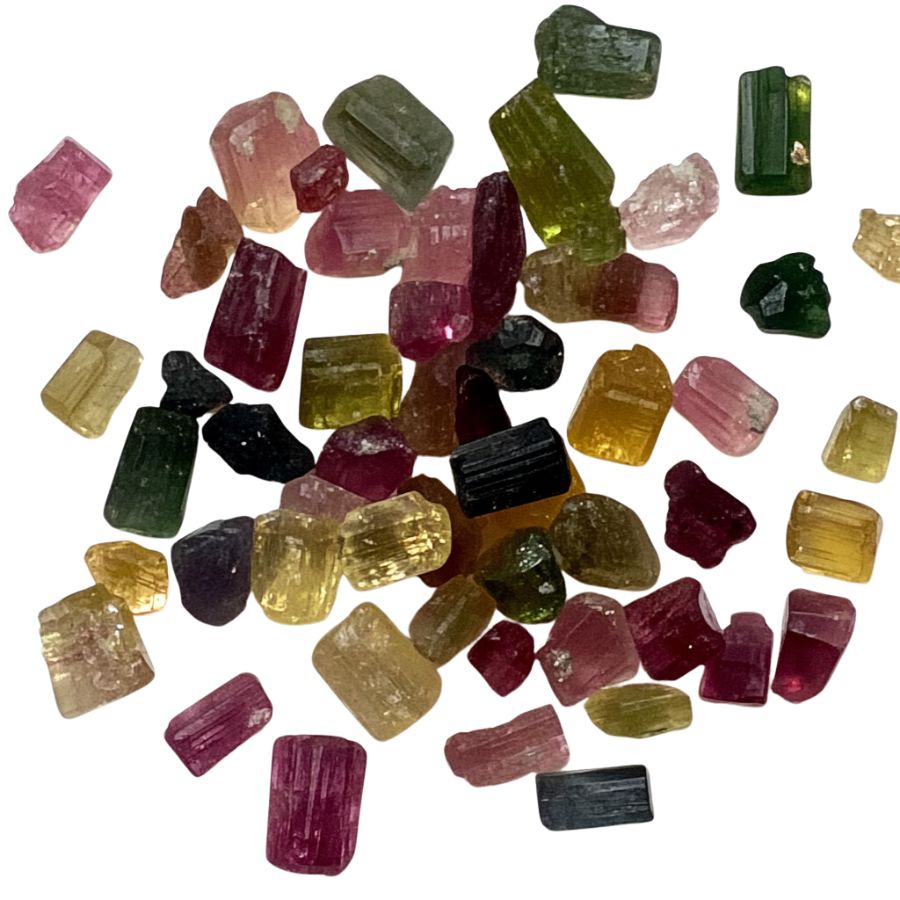
Tourmaline comes in many colors, like pink, green, blue, and even black. Some pieces have multiple colors, like watermelon tourmaline, which is pink and green.
If you see these color mixes, it’s likely tourmaline. Keep an eye out for vibrant shades.
Assess the Density and Weight
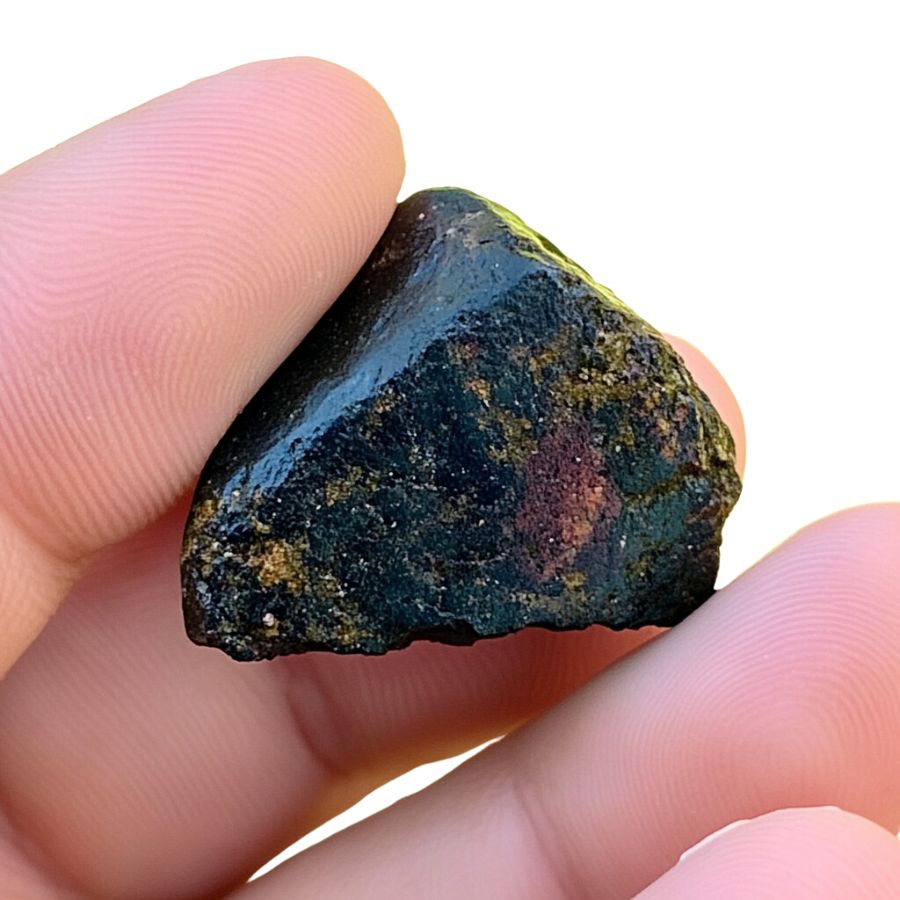
Rough tourmaline is relatively heavy for its size. If you pick up a piece and it feels denser than expected, it could be tourmaline. This weight can help you confirm your find.
Examine the Crystal Structure
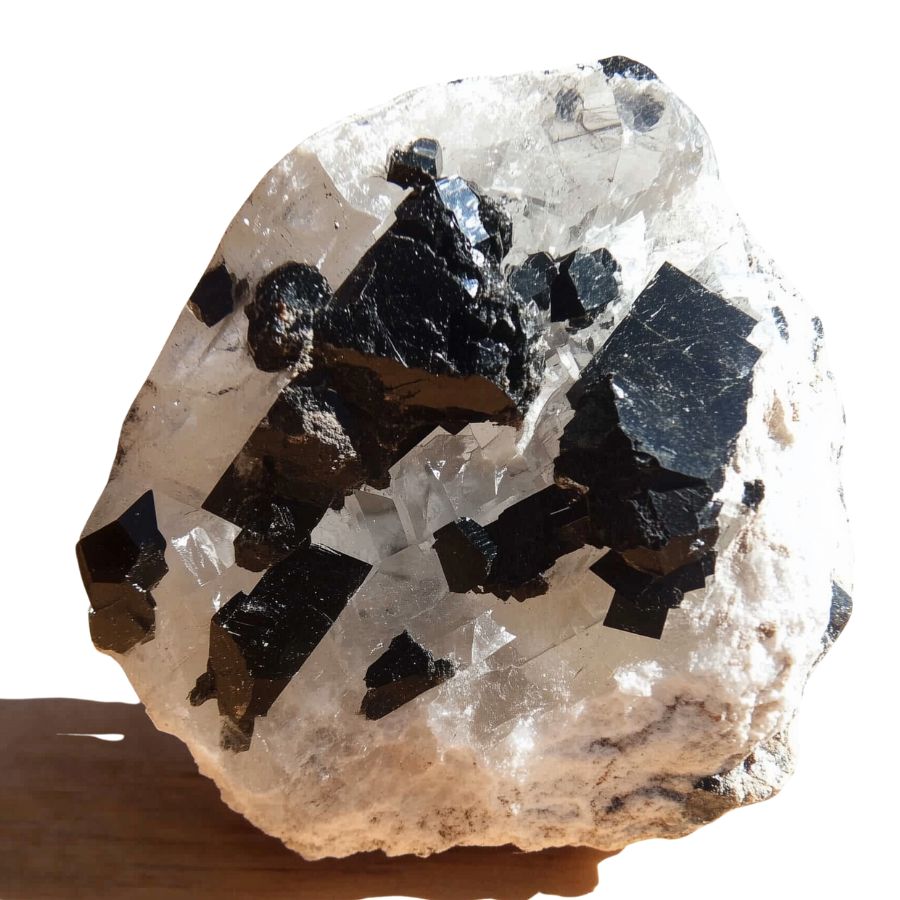
Tourmaline features distinctive crystal shapes, ranging from slender and elongated to chunky forms. Look for triangular cross-sections and striations on the surface, which indicate its unique growth patterns.
Check for Transparency
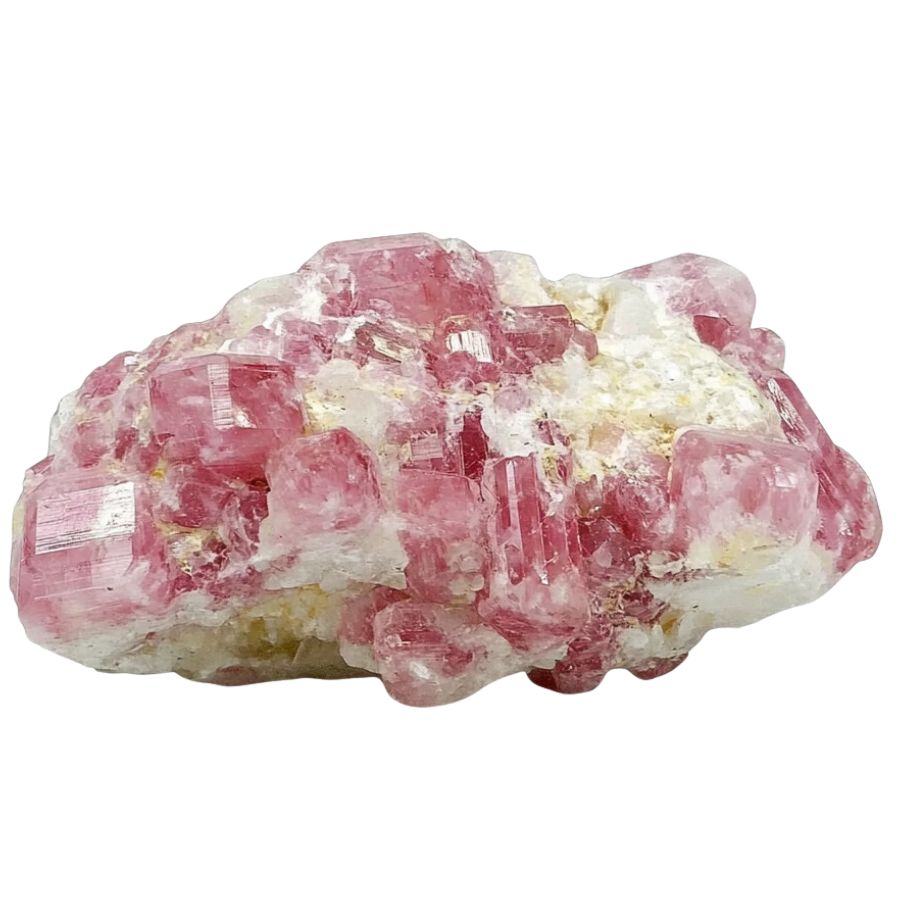
Some rough tourmaline can be slightly transparent. If you hold it up to the light, you might see through it a bit. This transparency can be a good sign that you have tourmaline.
A Quick Request About Collecting
Always Confirm Access and Collection Rules!
Before heading out to any of the locations on our list you need to confirm access requirements and collection rules for both public and private locations directly with the location. We haven’t personally verified every location and the access requirements and collection rules often change without notice.
Many of the locations we mention will not allow collecting but are still great places for those who love to find beautiful rocks and minerals in the wild without keeping them. We also can’t guarantee you will find anything in these locations since they are constantly changing.
Always get updated information directly from the source ahead of time to ensure responsible rockhounding. If you want even more current options it’s always a good idea to contact local rock and mineral clubs and groups
Tips on where to look
Once you get to the places we have listed below there are some things you should keep in mind when you’re searching:
Look for Sedimentary Rocks
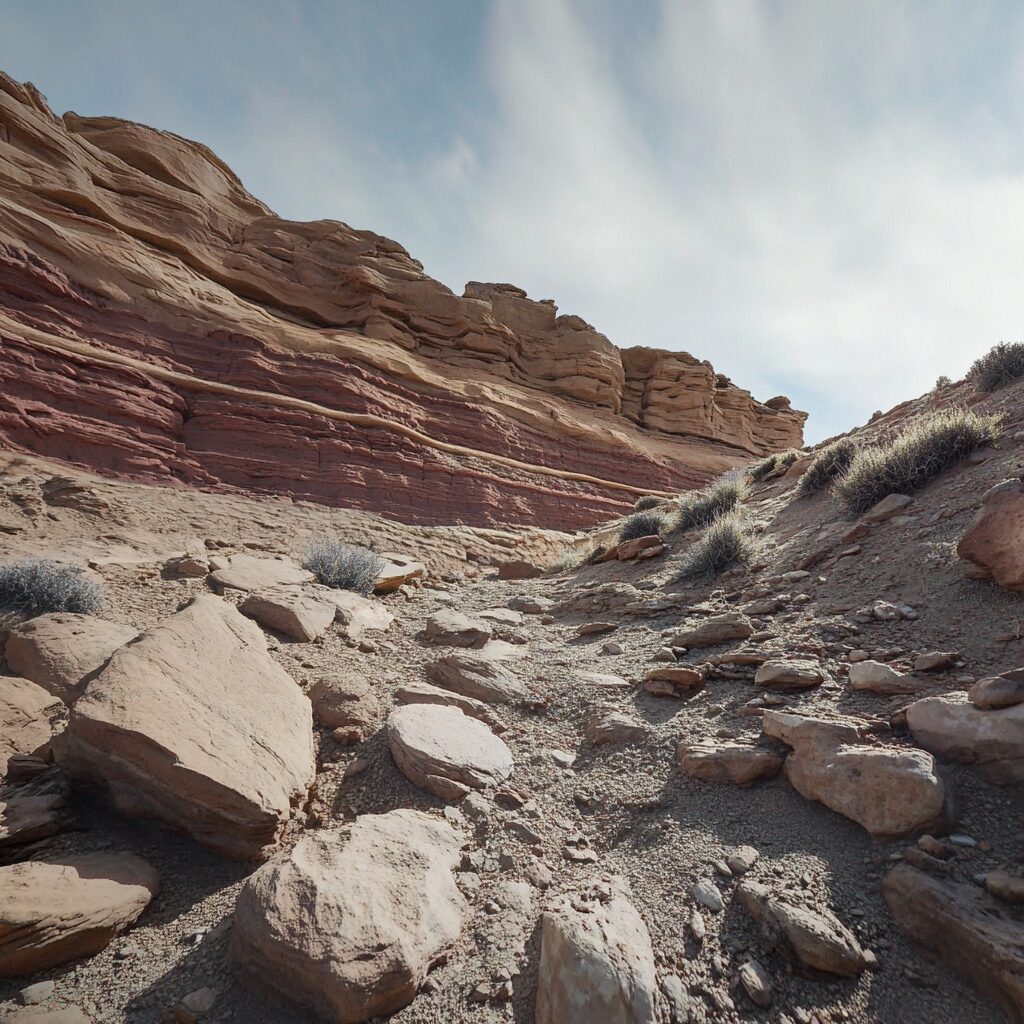
Sedimentary rocks are great places to find tourmaline. These rocks form from layers of sand, mud, and minerals. Over time, minerals like tourmaline can get trapped.
Look in riverbeds or areas where sediment has built up. You might find small pieces or even larger crystals.
Explore Mines
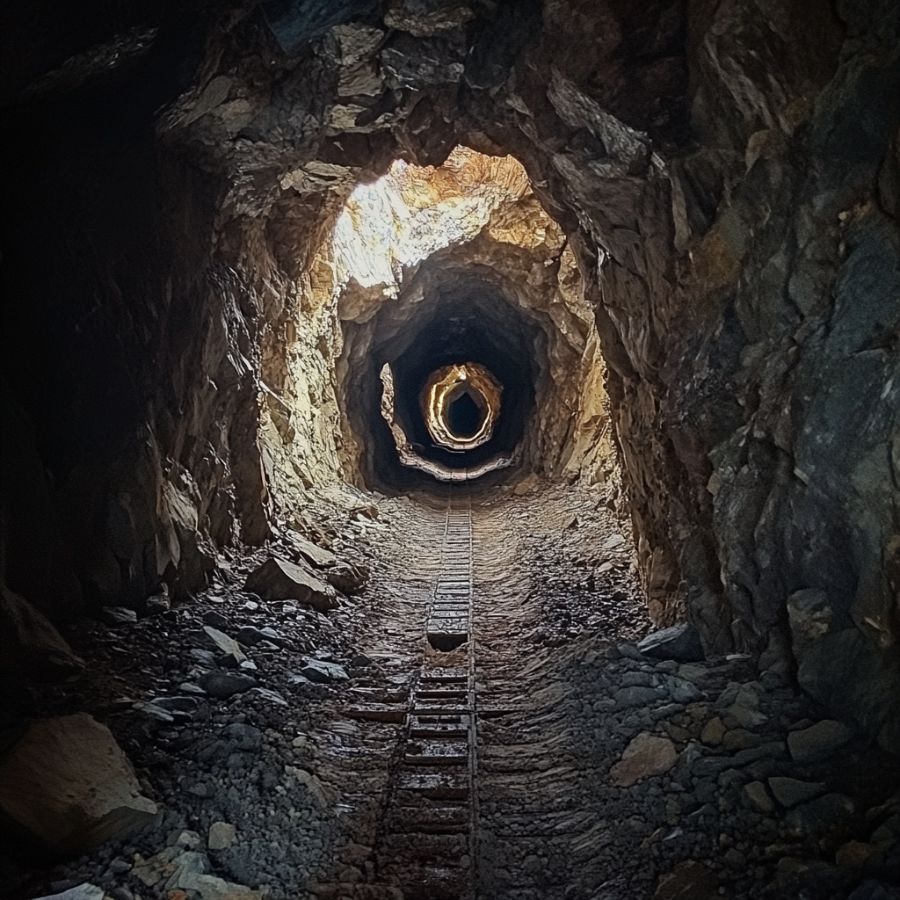
Mines are great spots to find tourmaline. Many mines across the U.S. extract various gemstones, including tourmaline.
Some mines even allow visitors to search for gems themselves. Always check if they have guided tours or special digging days.
Search in Gravel Pits

Gravel pits are often overlooked, but they can be treasure troves. These pits dig deep into the earth, exposing layers of rock.
Tourmaline can be found in the gravel. Just sift through the material carefully.
The types of Tourmaline can you find around the state
Rubellite and Schorl are the two primary varieties of tourmaline discovered in the Keystone State. Rubellite, a stunning pink to red variety, is highly prized by collectors for its vibrant color and rarity.
Schorl, the most common type of tourmaline, is characterized by its black color and is often found in granite and metamorphic rocks throughout the state.
These tourmaline varieties can be found in various forms, from small crystals embedded in rock matrices to larger, well-formed specimens.
While other tourmaline types exist, Rubellite and Schorl are the most frequently encountered in Pennsylvania’s mineral deposits.
Some Great Places To Start
Pennsylvania offers several promising locations for tourmaline enthusiasts to explore. These sites, scattered across the state, provide rockhounds with opportunities to uncover this colorful gemstone in various geological settings.
Always Confirm Access and Collection Rules!
Before heading out to any of the locations on our list you need to confirm access requirements and collection rules for both public and private locations directly with the location. We haven’t personally verified every location and the access requirements and collection rules often change without notice.
Many of the locations we mention will not allow collecting but are still great places for those who love to find beautiful rocks and minerals in the wild without keeping them. We also can’t guarantee you will find anything in these locations since they are constantly changing.
Always get updated information directly from the source ahead of time to ensure responsible rockhounding. If you want even more current options it’s always a good idea to contact local rock and mineral clubs and groups
Sparvetta Quarry
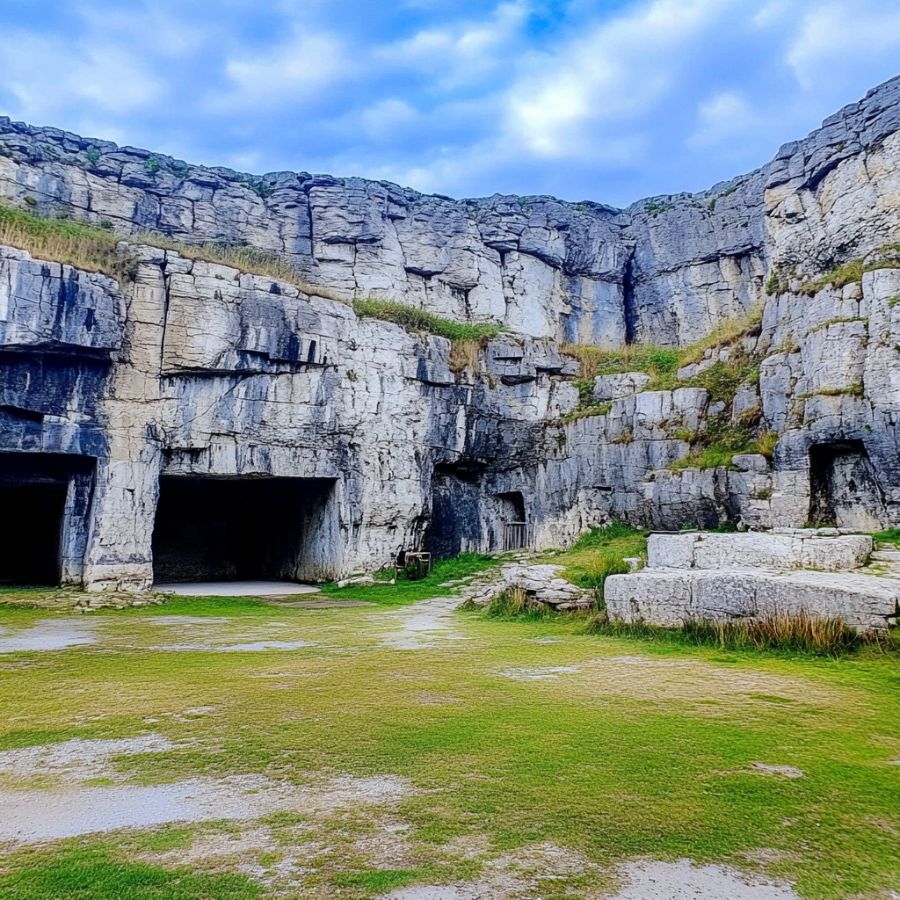
Sparvetta Quarry is an open-pit mine in southern Chester County. What makes Sparvetta Quarry special is its diverse mineral makeup. Along with tourmaline, you might stumble upon deweylite, a waxy mineral that adds to the quarry’s allure.
The quarry’s gravel pits are your best bet for finding tourmaline. These natural concentrators of minerals offer a treasure trove for patient searchers. As you sift through the gravels, keep an eye out for tourmaline’s distinctive prismatic crystals.
Chester County’s mineral heritage is well-known among rockhounds, and Sparvetta Quarry is a shining example of why.
Its unique geology and mineral variety make it a must-visit spot for anyone interested in Pennsylvania’s hidden treasures.
Mount Holly Springs
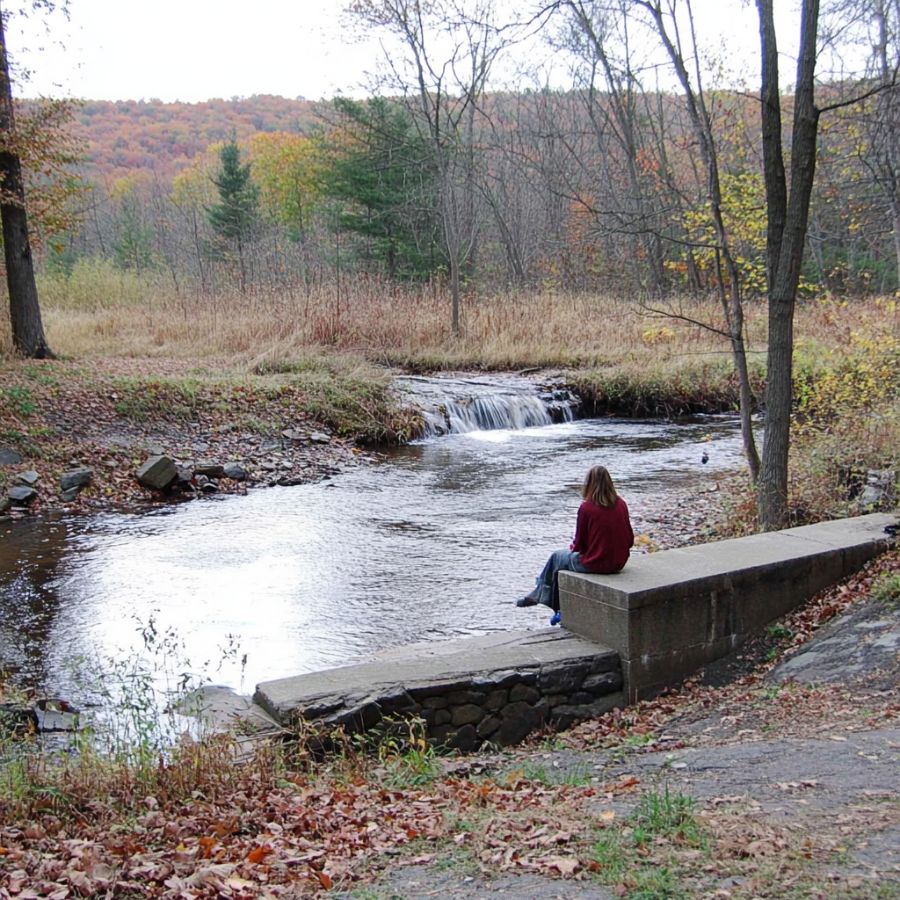
Nestled at the foot of South Mountain in Cumberland County, Mount Holly Springs is a rockhound’s paradise. This charming borough, situated 25 miles north of Gettysburg, boasts a unique geological makeup that makes it prime territory for tourmaline hunting.
The area’s rich history of mineral springs and iron ore deposits hints at its mineral wealth. Mountain Creek, which cuts through the borough, offers promising spots for gemstone enthusiasts.
Tourmaline is typically found in the local gravel pits, making these areas a must-visit for collectors. The diverse mineralogy of the region, shaped by the South Mountain range, creates ideal conditions for tourmaline formation.
While exploring, keep an eye out for the water gap between Mount Holly and Keller Hill – it’s not only a scenic spot but also a potential hotbed for gemstones.
Cheat Haven Dam
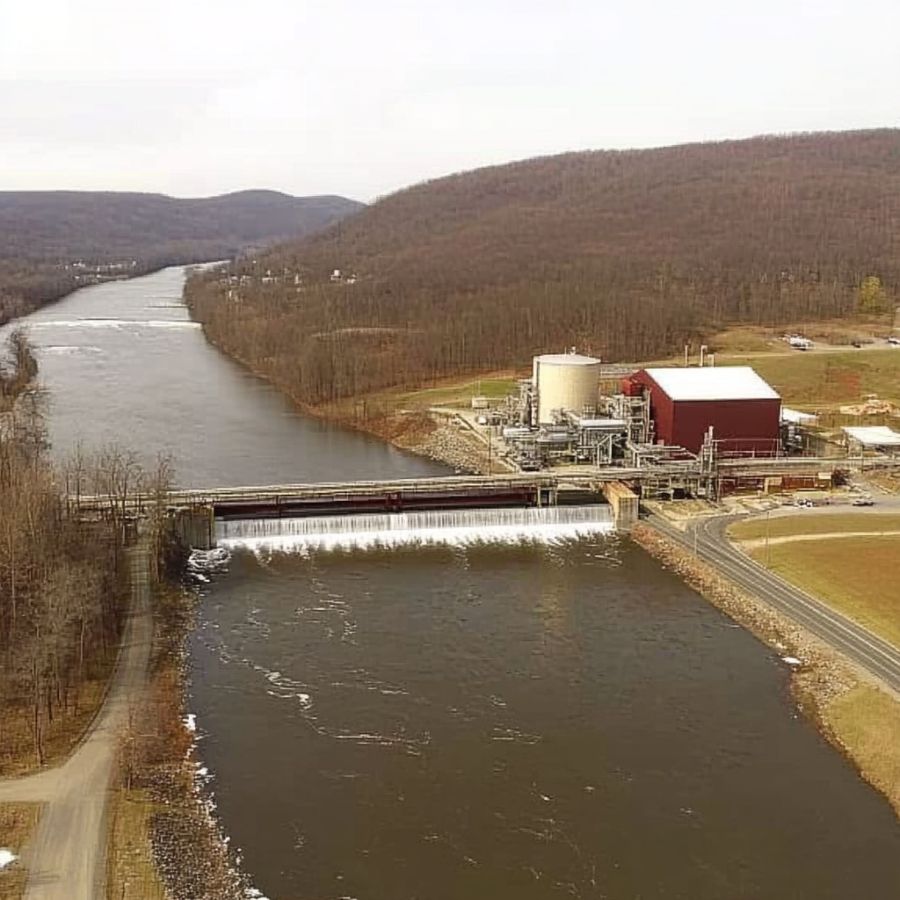
Cheat Haven Dam is located in the southwestern corner of Pennsylvania in Point Marion. This site, where the Cheat River meets the Monongahela, is a treasure trove for gemstone enthusiasts.
The area’s rich alluvial deposits, formed over centuries, make it a prime spot for finding tourmaline. What makes this location special is its diverse mineral composition.
The gravel pits near the dam are particularly promising, containing heavy mineral fractions like ilmenite and zircon alongside tourmaline. Rockhounds often sift through these gravels, especially after heavy rains when new material is exposed.
The dam’s construction has inadvertently created ideal conditions for gem hunting. The slowed water flow allows heavier minerals to settle, concentrating them in certain areas.
For the best chances of finding tourmaline, explore the riverbanks and gravel bars downstream from the dam. The colorful crystals often hide among the river rocks, waiting to be discovered by sharp-eyed collectors.
Dunkard Creek
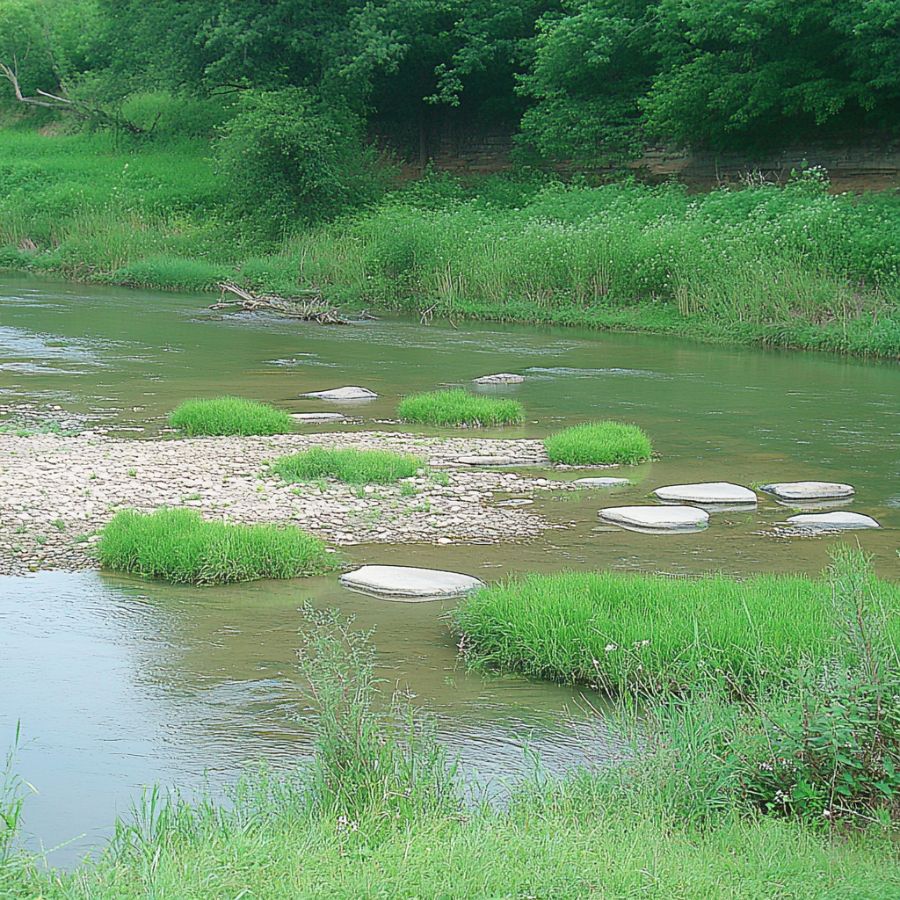
Dunkard Creek is a 36.9-mile stream that winds through the Appalachian landscape, offering a unique geological playground. It’s a hotspot for finding tourmaline. The creek starts near Mount Morris and ends up in the Monongahela River.
Rockhounds flock to Dunkard Creek’s gravel pits, where the real treasures lie. Years of erosion and sedimentation have concentrated various minerals in these areas.
The creek’s constant flow has worked like a natural sluice, sorting and depositing heavier minerals along its banks.
Interestingly, Dunkard Creek gained notoriety in 2009 for an ecological disaster that wiped out much of its aquatic life.
Since then, significant restoration efforts have revitalized the creek, making it not only a rockhounding hotspot but also a testament to environmental recovery.
While searching for tourmaline, keep an eye out for other minerals like quartz and pyrite, which are also found in this mineral-rich area.
Campbell’s Quarry
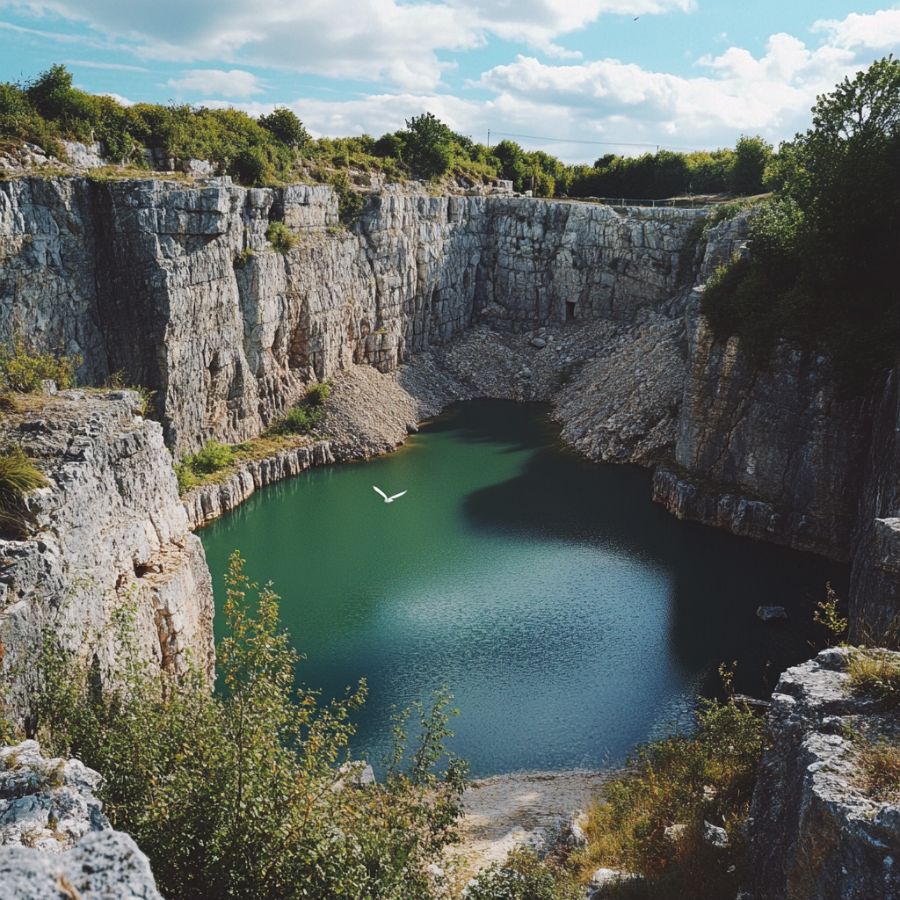
Campbell’s Quarry, nestled in Hestonville, Philadelphia County, sits on the west side of the East Branch of Indian Creek. This hidden gem for rockhounds is about a third of a mile north of Lansdowne Avenue.
The quarry is famous for its Wissahickon gneiss and pegmatite formations, which create a perfect environment for mineral enthusiasts. These geological features often yield large, well-formed crystals, making it a prime spot for rockhounding.
The best places to search for tourmaline in Campbell’s Quarry are the gravel pits, where various minerals have washed down from surrounding formations.
\The area’s rich mineral content stems from its unique geological history, making it a hotspot for rockhounding in Pennsylvania.
Places Tourmaline has been found by county
After discussing our top picks, we wanted to discuss the other places on our list. Below is a list of the additional locations where we have succeeded, along with a breakdown of each place by county.
| County | Location |
| Bedford | Sherman Valley |
| Allegheny | Ohio River alluvials in Neville Island |
| Allegheny | Allegheny River alluvials in Pittsburgh Area |
| Armstrong | Allegheny River alluvials in Freeport Area |
| Bucks | New Hopes Area gravel pits |
| Chester | Logan’s Quarry |
| Chester | Kennett Square |
| Chester | Nevin’s Quarry |
| Chester | Darlington Corners |
| Chester | Keystone Trap Rock quarry |
| Chester | Black Run |
| Chester | Corundum Hill in Unionville |
| Chester | Parkesburg |
| Chester | Bailey’s farm in Willowdale Area |
| Chester | Doe Run Quarries |
| Cumberland | White Rock Acres |
| Delaware | Morton Homestead |
| Delaware | Leiper’s Upper Avondale Quarry |
| Delaware | Leiper’s Quarry in Springfield Township |
| Delaware | Leiper’s Lower Avondale Quarry |
| Delaware | Marshall area draws and washes in Broomall Area |
| Delaware | Marcus Hook Creek |
| Fayette | Monongahela River alluvials in East Millsboro |
| Fayette | Monongahela River alluvials in West Masontown |
| Greene | Monongahela River alluvials on Brown’s Ferry Road |
| Lehigh | Mountainville Area |
| Northampton | Sherrer Quarry |
| Philadelphia | Campbell’s Quarry |
| Philadelphia | Overbrook Area in Hestonville |
| Philadelphia | Ridge Avenue and School Lane Quarries |
| Philadelphia | Wissahickon Valley |
| Philadelphia | Jerry O’Neill’s Quarry |
| Philadelphia | McCrea’s Quarry |
| Philadelphia | Fowler’s Quarry |
| Philadelphia | Hoffman’s Quarry |

